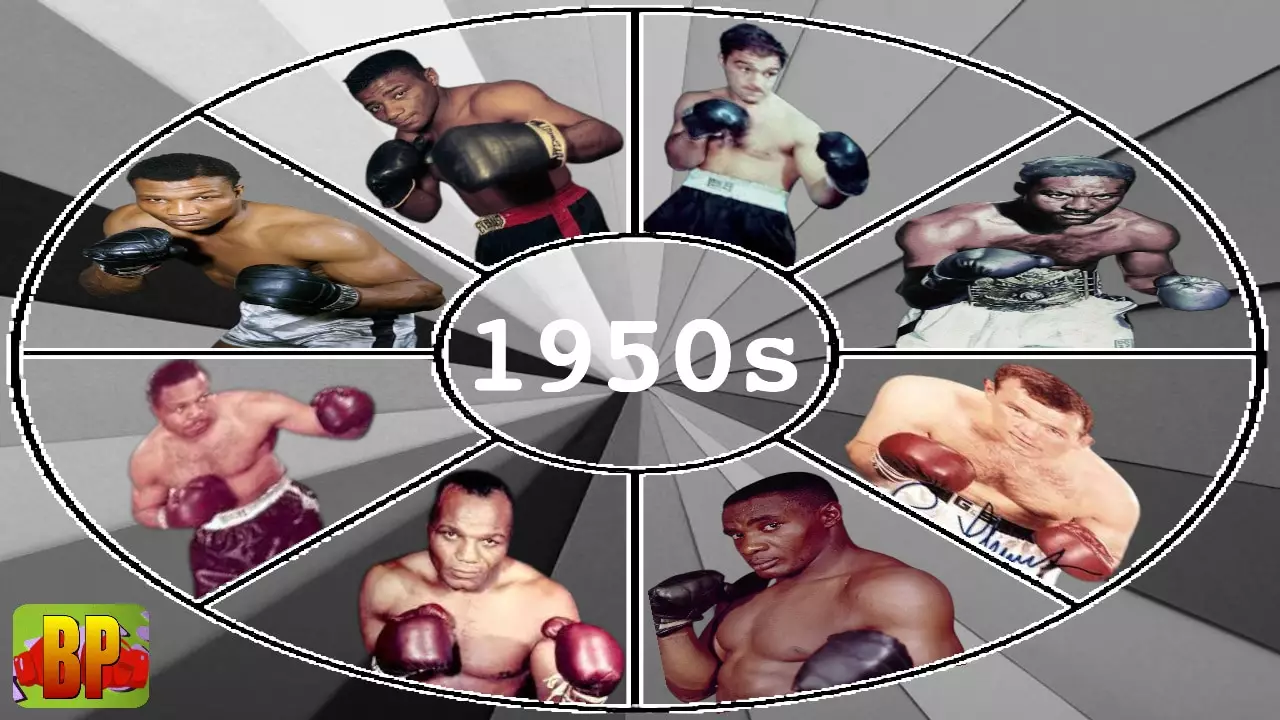The heavyweight division of boxing has long been the stage for legendary battles and iconic figures, marking the evolution of the sport across decades. As we stand at the threshold of the modern era, the decade of the 1950s emerges as a significant turning point, encapsulating the transition from the storied “Black & White Age” into a new chapter of boxing history. The 1950s not only witnessed the decline of previous champions but also set the stage for fresh heroes who would redefine the sport.
The heavyweight boxing landscape has been shaped that dates back to the 1880s with John L. Sullivan, the first recognized champion of the modern era. Sullivan’s reign set the tone for what fans would expect from boxing—the charisma, the power, and the undeniable thrill of anticipation surrounding each fight. Following him, the heavyweight division evolved through the decades, acquiring legends like Joe Louis, who became a symbol of American pride amidst global turmoil. Louis’s reign is often referred to as the “Golden Era,” which we began to see come to an end in the late 1940s.
The transition into the 1950s, however, was marked by uncertainty. Joe Louis, having established himself as a beloved figure, exited the ring, leaving behind a void that Ezzard Charles and Jersey Joe Walcott struggled to fill. As the early 1950s unfolded, both fighters gave valiant attempts to gain respect as champions, yet they often fell short of capturing the public’s imagination, lost in the shadow of Louis’s larger-than-life legacy.
Just as it seemed the heavyweight division was stagnating, four fighters emerged to breathe new life into the sport: Ezzard Charles, Jersey Joe Walcott, Rocky Marciano, and eventually, not-to-be-underestimated, Floyd Patterson. The interactions between these pugilists would become historic and define the second half of the decade. Marciano, known as the “Brockton Blockbuster,” rose to prominence with his undefeated record and powerful punching style, and transformed the division from its uncertain state back into one of excitement.
In Marciano’s ascendance, the matchmaking of bouts between him, Charles, and Walcott created classic battles that revived public interest in heavyweight boxing. The legendary fights, such as Marciano’s championship victory over Jersey Joe Walcott, became essential elements of the sport’s narrative during this era. Marciano’s style, tenacity, and knockout power contrasted sharply with the finesse of Charles and the endurance of Walcott, creating a tantalizing blend of clash styles that thrilled audiences.
As boxing continued to evolve through the decade, the significance of amateur competitions became increasingly clear, particularly with the Olympic Games. The 1950s marked a paradigm shift where Olympic boxers, like Cassius Clay, later known as Muhammad Ali, began to successfully transition into the professional realm. Clay’s victories in the early 1960s would eventually mark the dawn of a new era, but the groundwork lay in the 1950s.
The Olympics not only produced emerging talent but served as a platform that showcased distinct styles and strategies that fighters would carry into their professional careers. As prospects jostled for attention and championships, the decade set the stage for newcomers hungry for success in a sport that was rapidly changing.
The 1950s was indeed a tumultuous time for heavyweight boxing, one filled with both challenges and thrilling developments. As the “Black & White Age” concluded, it facilitated a renaissance in which Rocky Marciano, Ezzard Charles, and others revitalized interest in the division. The groundwork was laid for what would eventually explode into a golden era of boxing with iconic figures like Muhammad Ali dominating the conversation.
In retrospect, the decade holds a complex layer of history, showcasing not merely a transition but a vibrant reimagining of what heavyweight boxing could become. The familiar storylines of struggle, triumph, and the eternal quest for greatness in the ring are quintessential to boxing’s spirit and ensure that the pulse of heavyweight boxing continues to resonate through time.

